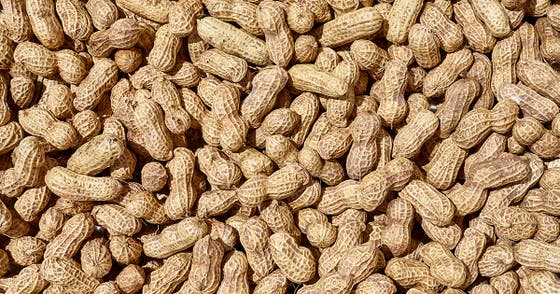Jul 21: May contain traces of peanut . . .

New research on allergen information on food labels provides concrete recommendations for the market
Imagine that your friend has a peanut allergy and he is coming to visit you. You go to the supermarket, looking for a biscuit to go with your coffee. Do you look at the label to see if the biscuit contains peanuts? And if it says 'may contain traces of peanuts', do you buy it or not? Researchers from Utrecht University, UMC Utrecht and TNO wanted to know how people interpret and assess the allergen information on labels. The study showed that less than 50 percent of the food-allergic and non-allergic Dutch participants believe that the information on allergens is clear. The information on labels is not unambiguous, even though it would help consumers make the right choice.
Two experiments were conducted for the study. Dr. Bregje Holleman (Utrecht University): "In the first experiment we wanted to know how people interpret labels. We offered three alternatives: no allergen information, a warning that there was a chance of cross-contamination (the so-called Precautionary Allergen Labelling, PAL in short) or inclusion in the ingredients list. We tested this in a controlled environment with eighteen products and surveyed both people with and without food allergies. We asked them to indicate how safe it is to buy a product for someone with a peanut allergy."
Take the warning on the label seriously
It was striking that people tended to assign less risk to a product with a PAL, than to products with the allergen as an ingredient. "This is logical on the one hand", says Holleman, "because it is riskier if the allergen is definitely present in the product than if it is likely to be present. On the other hand, the problem is that the amount of the allergen may be very small if it has been added as an ingredient, or even processed in such a way that the allergen becomes completely irrelevant, while a lot of the allergen may have occasionally ended up in the product by accident. So it makes sense to take the warning on the label seriously.
May contain peanut
In the second experiment, the researchers used the same products with three different warnings (PALs) that occur most frequently in the Netherlands: 'may contain peanut', 'may contain traces of peanut' or 'produced in a factory that also processes peanut'. How this PAL is formulated is not legally defined. Holleman: "It appears that both allergic and non-allergic consumers find the allergen information on packaged foods difficult to interpret. In addition, they incorrectly believe that a different formulation of the warning is associated with a different risk: if it says 'produced in a factory that also. . .', people think that it will not be too much of a problem, while 'may contain peanut' is taken much more seriously." The researchers therefore recommend using only one PAL formulation. "Our research shows that 'may contain' is the best wording. This recommendation should be made legal at the European level", says Holleman.
Limit value for PAL
In addition to an unequivocal PAL formulation, it is also important to establish a limit value for PAL. This is something TNO is working on, explains involved TNO researcher Dr. Marty Blom. "Among other things, TNO has clarified the sensitivity of the food-allergic population, so that a limit value for PAL can be established. TNO is the world leader in this field. For producers and patients, a clear limit for placing the PAL would mean a lot of clarity whereby they do not have to do their own risk assessment about the meaning, and again give value to the PAL warning on a product."
Health literacy
The researchers also investigated whether people's health literacy makes a difference. Prof. Leo Lentz: "We thought that if people had a lot of experience in reading labels, they would be more skilled in understanding allergen information than people with less experience. This did not appear to be the case in our study. In fact, the people with higher health literacy started to attach more meaning to the difference between the PAL formulations. And that is precisely what is incorrect." In addition, the researchers also looked at whether it matters whether people themselves have a food allergy, or not. "This showed that people with an allergy are more relaxed when it comes to allergen information than people without a food allergy," says Lentz.
Collaboration Utrecht University, TNO and UMC Utrecht
It is not surprising that the communication experts at Utrecht University sought cooperation with TNO and the UMC Utrecht again, as they did for the study of the optimal food label. Holleman: "Because in this experiment we had to look for products that may contain peanut, so that people with an allergy have to pay close attention to the label of these products, we worked together with dieticians from the UMC Utrecht. And at TNO, they have a lot of knowledge about legislation and guidelines when it comes to allergen information." "TNO can contribute the results and findings to national and international networks and expert panels," adds Blom. Prof. dr. Geert Houben (TNO expert and professor of Food-borne Risk Factors for Allergic and Inflammatory Diseases), for instance, is taking part in an FAO/WHO expert consultation to advise CODEX Alimentarius, a UN organisation that develops international food safety standards.

Future Food Utrecht
The research was funded by the Future Food hub of Utrecht University. Future Food Utrecht provides a platform where scientists and external stakeholders, through unique transdisciplinary research and education, contribute to the transition in the food chain, for a more sustainable world. Catalysts for change are sought; small interventions with large consequences.
Publication
Holleman BC, van Os-Medendorp H, van den Bergh H, van Dijk LM, Linders YFM, W. Blom M, Verhoeckx KCM, Michelsen-Huisman A, Houben GF, Knulst AC, Lentz LR. Poor understanding of allergen labelling by allergic and non-allergic consumers. Clinical and Experimental Allergy 2021, online ahead of print
